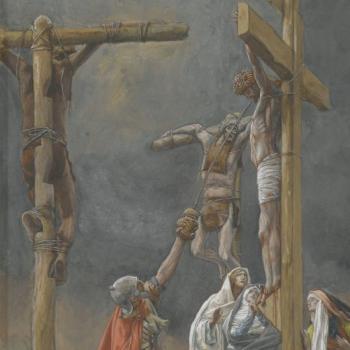Where are these new media going, anyway?
Remember first how blogs first came into existence: usenet forums, BBS, and online diaries, all fused together in the 1990s. Blogging as we know it today represents the evolutionary pairing of various early internet technologies, made popular by informal political diarists and virulent discussion threads. These origins may explain why blogs today are still filled with lengthy comment threads, political rampages, and in-jokes; more importantly, remembering the evolutionary path of blogs reminds us of the inevitability of technological change and perhaps gives us an indication of where we might be heading. Steve Rubel established a public "mind map" that charts possibilities for blogs, but I see a few trends worth noting.
1) Multimodality. The best blogs aren't pure 'blogs'; they already incorporate video, audio, images, and text. They are highly participatory both in terms of users generating content (comments, posts, etc.) and users disseminating content (pushing articles they find interesting over their own individual networks such as via Facebook, etc.). The next phase is a highly immersive platform for content sharing that incorporates formats of all kinds.
2) Persistence of the long form. Though it may cause some to roll their eyes in disbelief, blogs increasingly represent the long-form essay format in the context of internet discussions. Readers today have attention spans rivaling hummingbirds. Even blog posts of three paragraphs can scarcely retain the interest of the average internet reader, who is relentless in his need to be entertained. That said, there will always be a need to flesh out arguments and give context to thoughts. Somewhere, people will still need to explain themselves in full.
3) Integration of new-form social networks. When you log in to check your Google email, you also log in to Google's instant message software, their online document creation service, their photo album, their calendar, their Facebook equivalent, etc. Microsoft has a similar system. More and more, people will be able to broadcast their content over multiple channels simultaneously and in ways tailored to their respective audiences. An example: a user at Posterous can email a long-form blog post to a single address, and upon transmittal it will be published on a blog, linked to on Facebook, sent via Twitter, emailed via LinkedIn, and pinged on Google Buzz as well. We are only in the nascent phases of this sort of integration, and the end path will be instant content sharing with everyone you know in a custom-tailored format.
Mormons of the Future
So where does this leave us? Some things change, some don't. It's clear that our concepts of salvation in communities will continue to push us to reach out to others, to share, to question, and to sustain. We will continue to write about our faith, to laugh, to cry, to make snarky remarks, and to find moments of pure joy. It's unlikely -- and probably not desirable -- that Mormon internet communities persist in operating using the same methods and technology that they use today. If technological developments lead us to new realms of interconnectivity and instant sharing, these tools will play to the core strengths of Mormonism, and we will form a Bloggernacle (or some other Nacle-variant) where we embrace each other and see eye-to-eye better than ever before.
Equally promising are the signs that the Church itself is embracing this new world of connectedness and democratized content-generation; the new mormon.org site recognizes the power of a message that is modern, uncorrelated, and completely genuine. I believe that Mormons will find the future of the internet very much to their liking, as both the Church and its members move toward a time of bonding with each other and sharing experiences in ways never thought possible.
Steve Evans is a social media consultant with Banyan Branch and a founding blogger at the Mormon group blog By Common Consent. He writes frequently on the intersections of new media, Mormonism, and social memory. Steve lives in Seattle with his family.




